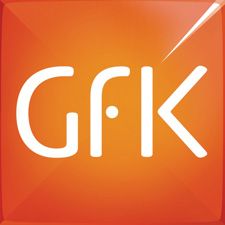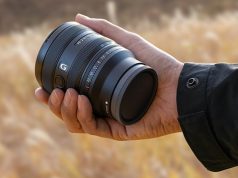
New York, NY—The trend in camera demand “continues to focus on high-quality and innovative products that demonstrate real photo-related added value compared to smartphones,” reported GfK, a finding attributed to its research on the global photo market for the first six months of 2015.
Bearing out the emergence of recent trends, GfK found that mirrorless system cameras and compact point-and-shoot cameras with large sensors and high-zoom factors are the strongest contenders. Action cameras also show dynamic growth. Faring the worst, no surprise, basic point-and-shoot models.
GfK projects the worldwide market volume for imaging hardware will be approximately $22 billion by year’s end. Their research also shows that sales of digital cameras and lenses declined by 10% globally in the first six months of 2015, attributed primarily to the market performance of simple compact cameras whose functions are provided by smartphones. The low-end, basic point-and-shoot camera segment lost 35% of its sales.
However, there are growth segments that do not quite compensate for the decline in low-end compact cameras but do open up sustainable future prospects for the camera market. “Essential to this is the extent to which smartphone users can be motivated to upgrade to a ‘real’ camera,” GfK cautioned. “Therefore, manufacturers must keep developing advances in camera technology over smartphones.”
The recent study finds that interchangeable-lens cameras make up 68% of total digital camera sales. DSLRs comprise the largest share at 75%. While GfK found that sales volume declined by 18%, sales only fell by 10%, because of price increases. “This was mainly due to the high-end models that are equipped with a full-frame sensor and cost on average €2,155 ($2,425]. An additional 25% was allotted to mirrorless system cameras (compact system cameras), whose sales increased by 4%. But even here, the number of units sold declined by 11%. The average price on the other hand increased by €79 to €565 [$90 to $635],” noted GfK.
For point-and-shoot cameras, the firm found high-end models generate 64% of compact camera sales. “Handy devices with strong optical zoom (greater than 20x), which are ideal for vacations, are particularly in demand. Models that have a small case but are equipped with a large sensor are also popular.”
Also notable, GfK reported that interchangeable lenses are selling better than cameras. The success of high-quality DSLRs and mirrorless cameras has resulted in a higher demand for additional lenses.
Action Camera Demand
As for action cameras, GfK believes they “offer impressive opportunities for growth.”
The action cams category saw global market volume growth of 55% in the first half of 2015. Conversely, traditional camcorders declined by 23%. GfK forecasts the action cam market will remain on track for strong growth in 2016.
“The market shift toward action cameras goes hand in hand with a shift between user groups. Consumers are showing an increased interest in capturing their experiences and activities with spectacular and authentic videos with the help of small and smart device solutions,” noted GfK.
The company also believes that for the European market, 4K video resolution is a driving force for growth. It cites 36% of action cameras sold in the first six months of 2015 were equipped with this capability. In addition, 4K camcorder sales achieved a 16% share in the traditional camcorder segment.
Through retail panels, GfK collects point-of-sales data in more than 70 countries worldwide relating to photo hardware. This analysis is based on worldwide and European market trends of the photo markets in the first six months of 2015. gfk.com





